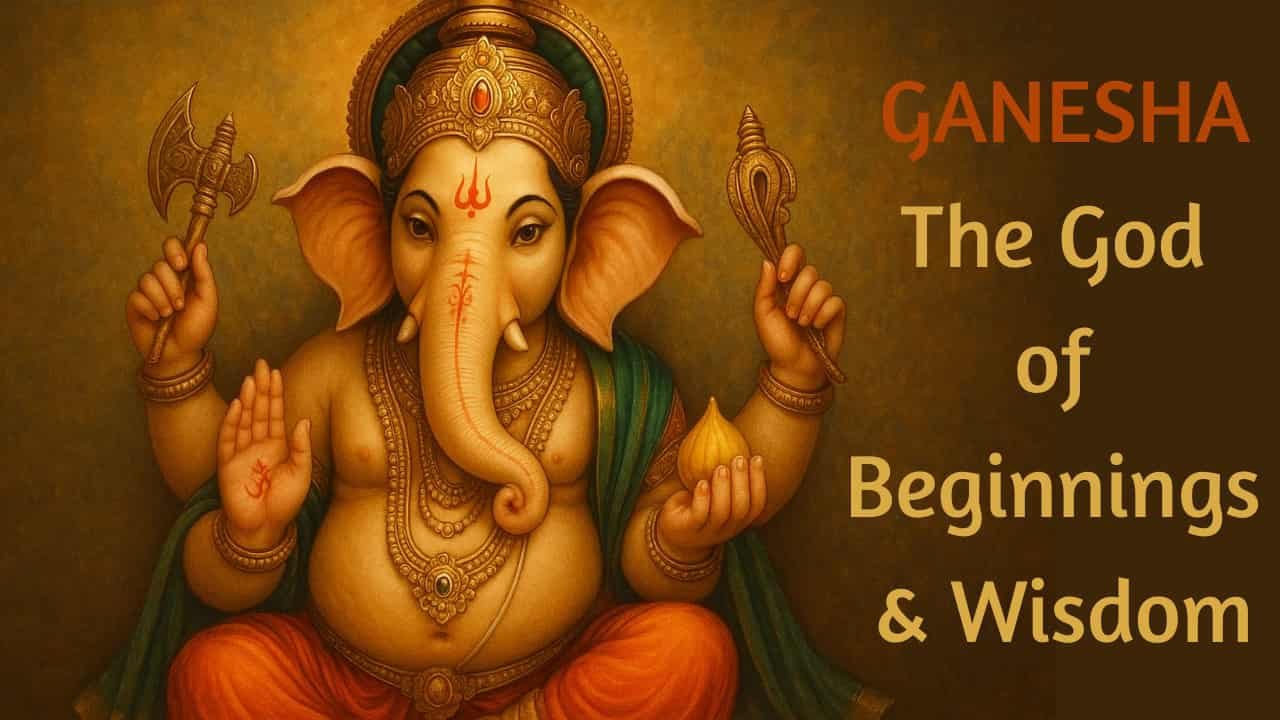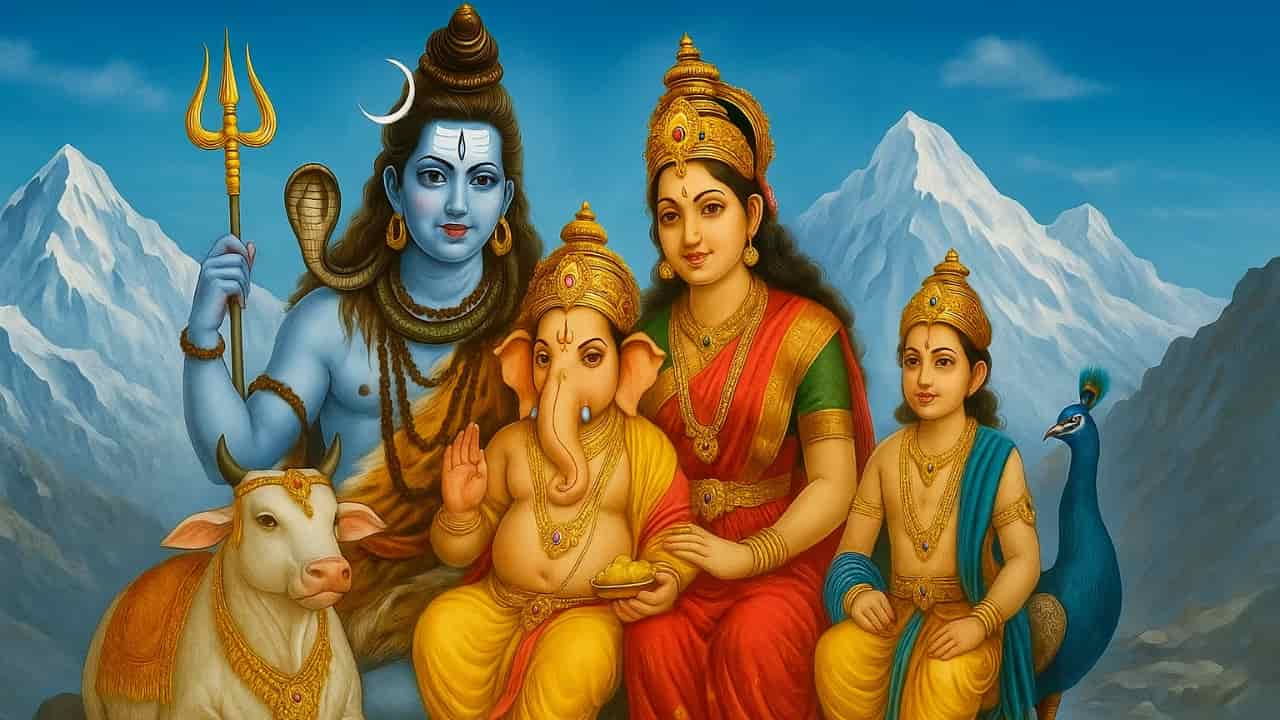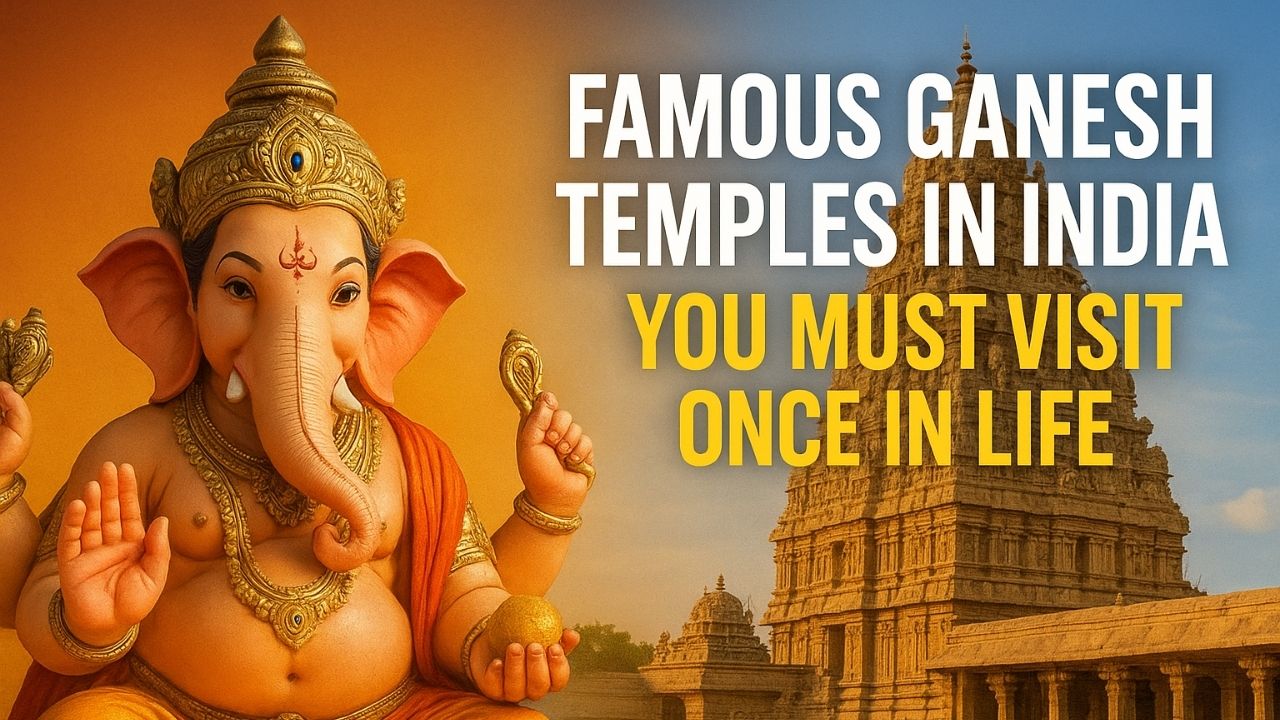
The Beloved Elephant-Headed Deity
Lord Ganesha is one of the most widely worshipped and beloved deities in Hinduism. Recognized instantly by his elephant head, potbelly, and gentle smile, he is the remover of obstacles, the patron of intellect and learning, and the god of new beginnings.
Whether it’s the start of a journey, a business venture, or a school year, Ganapati Bappa is invoked first. His presence is considered auspicious, and his blessings are sought to ensure success, clarity, and peace.
Birth of Vinayaka: A Divine Creation
The origin of Ganesha is both mystical and symbolic. According to one popular version, Goddess Parvati created Vinayaka from the turmeric paste she used for bathing. She molded a boy and breathed life into him, assigning him the duty of guarding her privacy.
When Lord Shiva, Parvati’s husband, returned and tried to enter, Ganesha stopped him. Unaware of his identity, Shiva became enraged and beheaded him. Parvati was devastated. To console her, Shiva promised to bring Ganesha back to life and replace his head with that of a young elephant.
Symbolism of the Elephant Head
Ganapati’s elephant head is rich in symbolism. It represents:
- Wisdom and intelligence
- Strength and loyalty
- Calmness and patience
- The ability to listen deeply
The large ears signify attentiveness, the small eyes focus, and the trunk’s flexibility. His unique appearance teaches that true wisdom lies in balance, between strength and gentleness, intellect and emotion.
Family and Relationships

Ganesha is the son of Shiva and Parvati and the brother of Kartikeya, the god of war. He is often depicted with his mouse companion, Mooshak, who serves as his vehicle (vahana).
The mouse symbolizes desire, which he controls and rides upon. This imagery teaches that wisdom is not about suppressing desire but mastering it. Bappa’s playful nature and deep wisdom make him relatable to both children and adults.
The Broken Tusk and the Mahabharata
One of Ganesha’s most iconic features is his broken tusk. The story behind it is deeply meaningful. When sage Vyasa wanted to dictate the Mahabharata, he chose Ganapati as his scribe.
Ganesha agreed, but on one condition: Vyasa must recite the epic without pause.
As the dictation progressed, Ganesha’s pen broke. To keep his promise, he broke off his own tusk and continued writing. This act symbolizes sacrifice, dedication, and the pursuit of knowledge.
Vighnaharta's Wisdom and Humor
Ganesha is known not just for wisdom but also for wit and humor.
- In one tale, the gods held a race around the world. Kartikeya set off on his peacock, flying across continents. Bappa, instead, calmly circled his parents, saying they were his entire world.
This clever act won him the race and earned him the title of Prathama Pujya, the one who is worshipped first. The story teaches that wisdom often lies in perspective, not speed.
Ekadanta in Daily Life and Rituals
Ganapati is present in nearly every aspect of Hindu life. His image is found at doorways, on books, in vehicles, and in homes. Before any major event, whether it is a wedding, an exam, or a business launch, Ganesha is invoked.
- Common rituals include:
- Chanting mantras like “Om Gan Ganapataye Namah“
- Offering modaks (sweet dumplings), his favorite food
- Lighting lamps and incense
- Drawing his image with rice flour or turmeric during festivals
Ganesh Chaturthi: A Festival of Devotion
Ganesh Chaturthi is the grand celebration of Ganesha’s birth. It lasts for 10 days and is marked by vibrant processions, music, dance, and community gatherings.
In cities like Mumbai, Pune, and Hyderabad, massive idols are installed in homes and public spaces. Devotees offer prayers, sing hymns, and share food. On the final day, the idols are immersed in water, symbolizing Bappa’s return to Mount Kailash and the cycle of creation and dissolution.
Ganesha Across Cultures
Though rooted in Hinduism, his influence extends beyond India. He is revered in:
- Buddhism: as a protector of dharma
- Jainism: as a guardian of temples
- Southeast Asia: especially in Indonesia, Thailand, and Cambodia
- Global yoga and wellness communities: as a symbol of mindfulness and inner peace
His universal appeal lies in his approachable form and the deep values he represents.
Spiritual Lessons from Siddhivinayaka
Ganesha’s stories and symbols offer timeless wisdom. Some key lessons include:
- Begin with humility – He is worshipped first, reminding us to start with reverence
- Listen more, speak less – His large ears and small mouth emphasize the power of listening
- Adapt to challenges – His curved trunk shows flexibility in thought and action
- Control desire – Riding the mouse teaches mastery over impulses
- Sacrifice for knowledge – The broken tusk reflects dedication to learning
These teachings are not just spiritual; they are practical tools for everyday life.
Ganesha in Art and Literature
Ganesha has inspired countless artists, poets, and writers. His image appears in:
- Classical sculptures and temple carvings
- Miniature paintings and folk art
- Modern illustrations and digital designs
- Poetry and devotional songs
Writers have explored his dual nature, childlike yet wise, playful yet profound. His stories are retold in comics, animations, and films, making him accessible to new generations.
Modern Relevance of Bappa
In today’s fast-paced world, Ganesha’s teachings are more relevant than ever. He reminds us to:
- Pause before beginning
- Clear mental and emotional obstacles
- Stay grounded in wisdom
- Balance ambition with compassion
Whether you’re a student, entrepreneur, artist, or seeker, he offers guidance. His presence is calming, his stories inspiring, and his symbolism empowering.
Ganesha and Inner Transformation
Beyond rituals and festivals, Bappa represents inner transformation. He is the remover of obstacles, not just in the outer world, but within the mind and heart.
Meditating on Ganesha helps cultivate clarity, courage, and calm. His image encourages introspection: What are the obstacles we face? What must we sacrifice to grow? What wisdom do we need to move forward?
The Eternal Guide
Ganesha is more than a deity; he is a guide, a friend, and a symbol of hope. His stories teach us that wisdom is not about perfection, but about understanding, compassion, and resilience.
He reminds us that every beginning holds potential, and every obstacle is an opportunity to learn. Whether we face challenges in career, relationships, or personal growth, invoking Ganesha helps us navigate with grace.
In the end, Bappa stands as a timeless figure, rooted in tradition, yet relevant in every moment. And in his gentle smile, we find the courage to start again.
He is the god of beginnings, but also of becoming.
His presence encourages us to embrace change, to seek clarity in confusion, and to move forward with faith. Ganesha’s wisdom is not confined to temples; it lives in our choices, our thoughts, and our intentions. In every new step, he walks with us, silently guiding us toward light.
Ganpati Bappa Morya!

